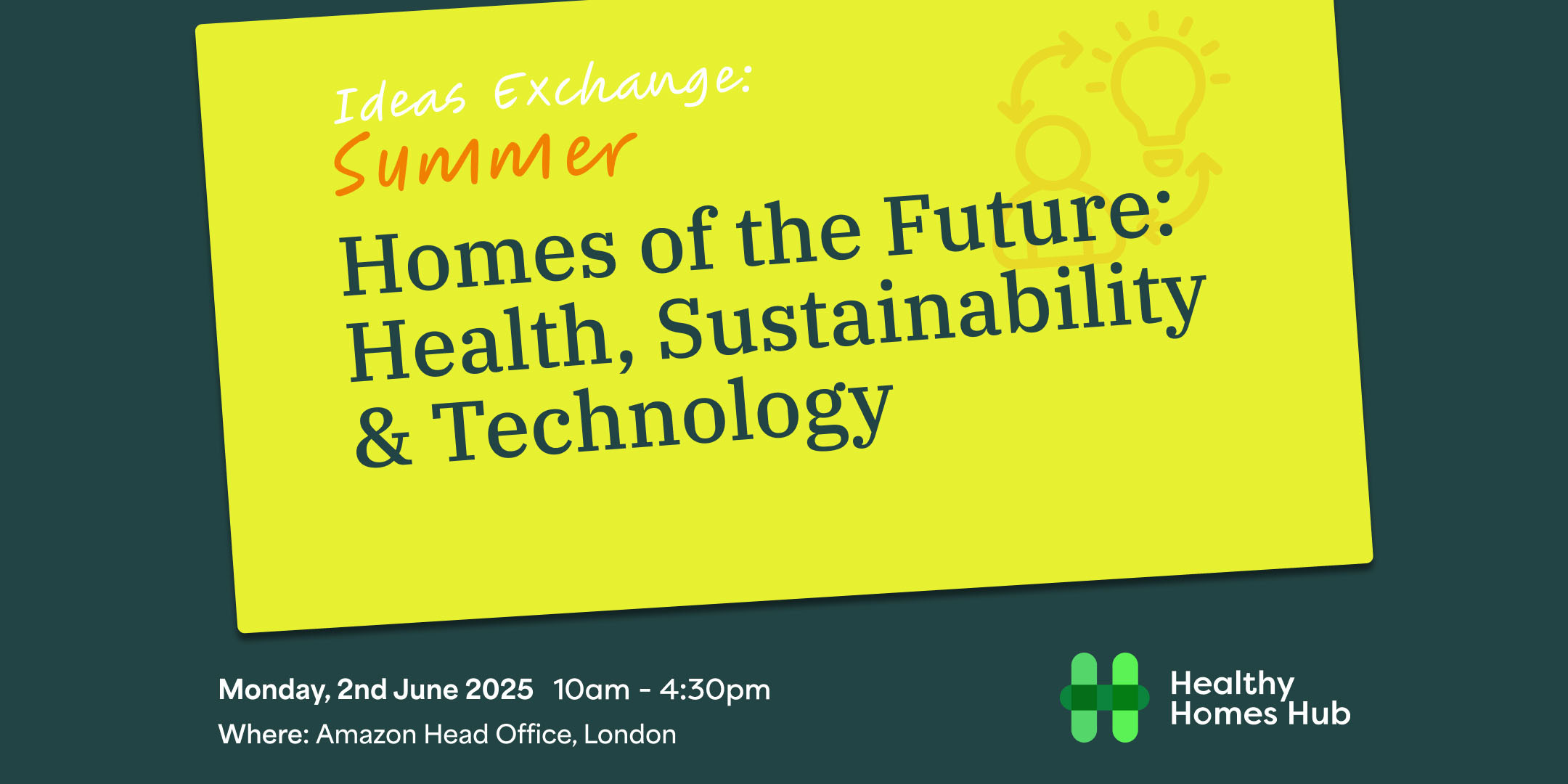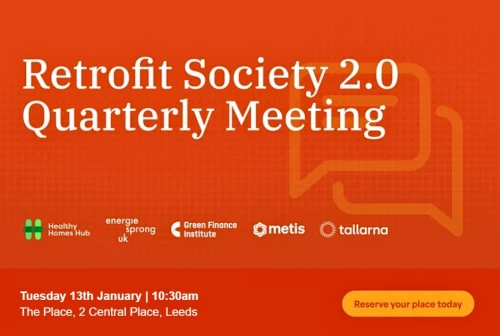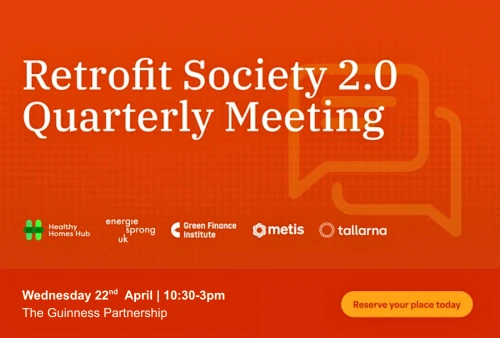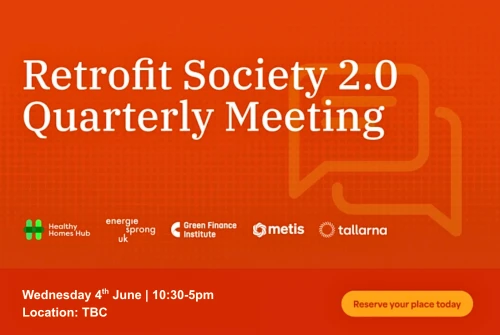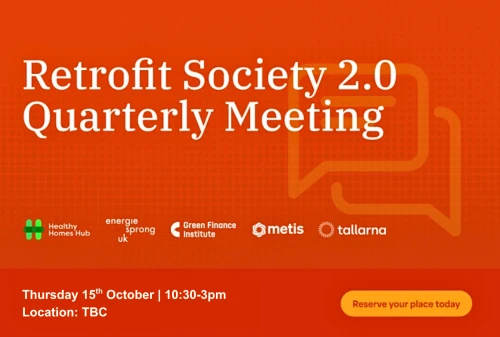Breaking Barriers: A Relational Approach to Retrofit Success in Social Housing
05/06/2025
Jenny Danson
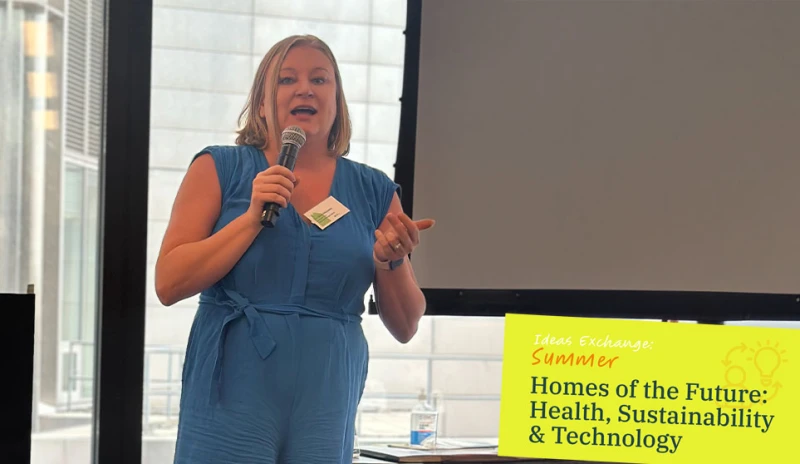
Retrofit is often viewed as a technical challenge: assess a property, fit the kit, meet the targets. But as Dr Claire McCamley explained in her compelling session, this approach misses the point. “Retrofit isn’t just about heat pumps,” she said. “It’s about people.”
Claire, an academic in marketing and behavioural science, joined the Summer Ideas Exchange to share the findings of her multi-year collaboration with Together Housing. Her work shines a light on why retrofits fail—and what can be done to improve uptake, reduce refusals, and build trust with tenants. The answer, it turns out, lies in relationships.
Beyond the Tech: Why People Say No
Across the sector, retrofit refusal rates remain high—sometimes approaching 45%. These aren’t technical failures; they’re relational ones. “We tend to frame this as tenants ‘refusing’,” Claire noted. “But in reality, it’s often resistance, not refusal. And resistance is an opportunity for dialogue.”
Claire explained that tenants’ decisions are shaped not just by cost or disruption, but by emotional, social, and psychological factors:
Do I trust the landlord to follow through?
What happened last time I had work done?
Will I understand how to use this new system?
Will it actually make my home better?
When these questions go unanswered—or worse, unasked—resistance grows.
A Relational Approach
At the heart of Claire’s research is a new model for retrofit delivery: one that places tenants, not technology, at the centre.
“We called it a relational approach because retrofit isn’t a transaction—it’s a journey,” she explained. “And that journey involves a huge number of stakeholders, all of whom need to be consistent, aligned, and human.”
Claire and the team mapped the retrofit journey into three key phases:
Planning – Understanding tenant needs, segmenting personas, and ensuring internal staff are prepared.
Implementation – Delivering the works in a way that is sensitive, supportive, and well-communicated.
Monitoring – Ensuring tenants know how to use new systems and supporting them beyond installation.
Each of these phases involves emotional touchpoints, from early doubts to post-installation frustrations. A truly tenant-centred retrofit process, Claire argued, must prepare for these.
Internal Culture Matters Too
While much of the focus is on tenant engagement, Claire was clear: internal alignment is just as important. In many organisations, different teams interact with tenants in different ways—sometimes giving conflicting messages or failing to flag important risks.
Claire’s team ran workshops with staff across Together Housing to uncover how well internal processes supported retrofit delivery. The findings were revealing. “Many staff didn’t see it as ‘their job’ to talk about retrofit,” she said. “But tenants see the organisation as one. Every contact counts.”
The result of these internal reviews was a new framework that helped Together Housing better understand:
Who its tenants were (using personas)
What support they needed at each stage
Where the gaps in internal communication and training were
This internal review formed the foundation of the toolkit that Claire and her team developed.
Tenant Personas and Emotional Journeys
A key innovation in Claire’s approach is the use of tenant personas—distinct profiles based on lived experience, not just demographics. For example:
An older resident who rarely leaves the home and fears disruption
A working family juggling schedules and worried about time off
A tenant with past trauma linked to housing services
Each of these tenants may face the same technical intervention—but their emotional journey is very different. Understanding that allows housing providers to tailor communication and support accordingly.
Claire explained: “We’re used to demographic profiling, but if we really want retrofit to succeed, we need to understand behavioural and emotional profiles too.”
Addressing the Four Barriers to Retrofit
Through her work, Claire identified four consistent barriers to retrofit:
Financial – Fears about cost, savings, and value
Emotional – Anxiety, past experiences, and mistrust
Knowledge – Lack of understanding or misinformation
Community – Local stories, peer influence, and social pressure
The toolkit helps housing providers identify which of these barriers are most prominent at each stage of the journey—and provides structured ways to respond. “A neighbour’s negative story can undo months of work,” Claire said. “But a champion with a good experience can do the opposite.”
Practical Tools, Not Just Theory
Claire acknowledged that this approach may sound resource-intensive. But she was clear: it doesn’t have to be. Much of the insight needed to segment tenants and identify needs already exists—within housing teams, support officers, and tenant engagement staff.
“You don’t need expensive consultants,” she said. “You need the time and commitment to bring people together and listen—internally and externally.”
The toolkit Claire developed is currently in pilot with other housing associations, but its principles are open to all:
Start with internal alignment
Map the tenant journey in detail
Segment tenants meaningfully
Tailor support based on emotion, not just need
Use peer voices to shape the narrative
Changing the Culture of Retrofit
Perhaps the most important shift Claire is advocating for is cultural. “We talk a lot about net zero, but we don’t always talk about trust,” she said. “If a tenant doesn’t believe you’ll fix their dripping tap, they’re not going to trust you to install a new heating system.”
Retrofit isn’t just about decarbonisation—it’s about repair, respect, and relationships. And until housing providers embrace that, progress will be slow.
Looking Ahead
Claire’s work offers a practical way forward. Not a complete solution, but a toolkit that bridges the emotional and operational gaps in retrofit delivery. The message is simple but powerful: if we want to decarbonise homes, we need to humanise the process.
About the Summer Ideas Exchange
Hosted by Healthy Homes Hub and supported by AWS, the Summer Ideas Exchange is a platform for cross-sector collaboration, learning, and innovation. Claire’s session stood out not just for its academic rigour, but for its deep empathy—reminding us all that the path to net zero runs through the front doors of real people, living real lives.
Become a member to read this article and more!
Social Housing Providers, Local Government, and Academics can sign up for free to access this article and more.
Already registered? Login Here
Related Content
What Are the Benefits of Being a Member of the Healthy Homes Hub?
Industry Recognition and Networking:
Connect with a thriving network of over 350 housing organisations, including decision-makers, innovators, and leaders. Build partnerships that enhance your professional growth and create lasting business opportunities.
Showcase Your Expertise:
Demonstrate your impact by participating in exclusive case studies, webinars, and events. Highlight your contributions to creating healthier, sustainable homes, reaching a broad audience across the sector.
Influence Policy and Advocacy:
Be part of shaping housing policy through direct engagement with policymakers and advocacy efforts. Stay at the forefront of discussions driving meaningful change in the housing sector.
Access to Market Insights:
Gain access to Healthy Homes Hub’s regular newsletters, expert analysis, and resources. Stay informed about trends, regulations, and innovative practices that affect housing professionals.
Specialised Events and Workshops:
Take part in events like the Immersive Study Tours, offering hands-on learning and networking opportunities. Visit groundbreaking projects and facilities to explore real-world solutions for healthier and more sustainable homes.
Exclusive Tools and Resources:
Only members can upgrade to Housing Sage, a cutting-edge AI assistant tailored to social housing professionals. Benefit from personalised insights, regulatory guidance, and innovative ideas to enhance your operations.
Collaboration Opportunities:
Contribute to Healthy Homes Hub’s mission by sharing best practices, participating in action learning programmes like the Retrofit Society, or co-developing solutions with academic and industry leaders.

